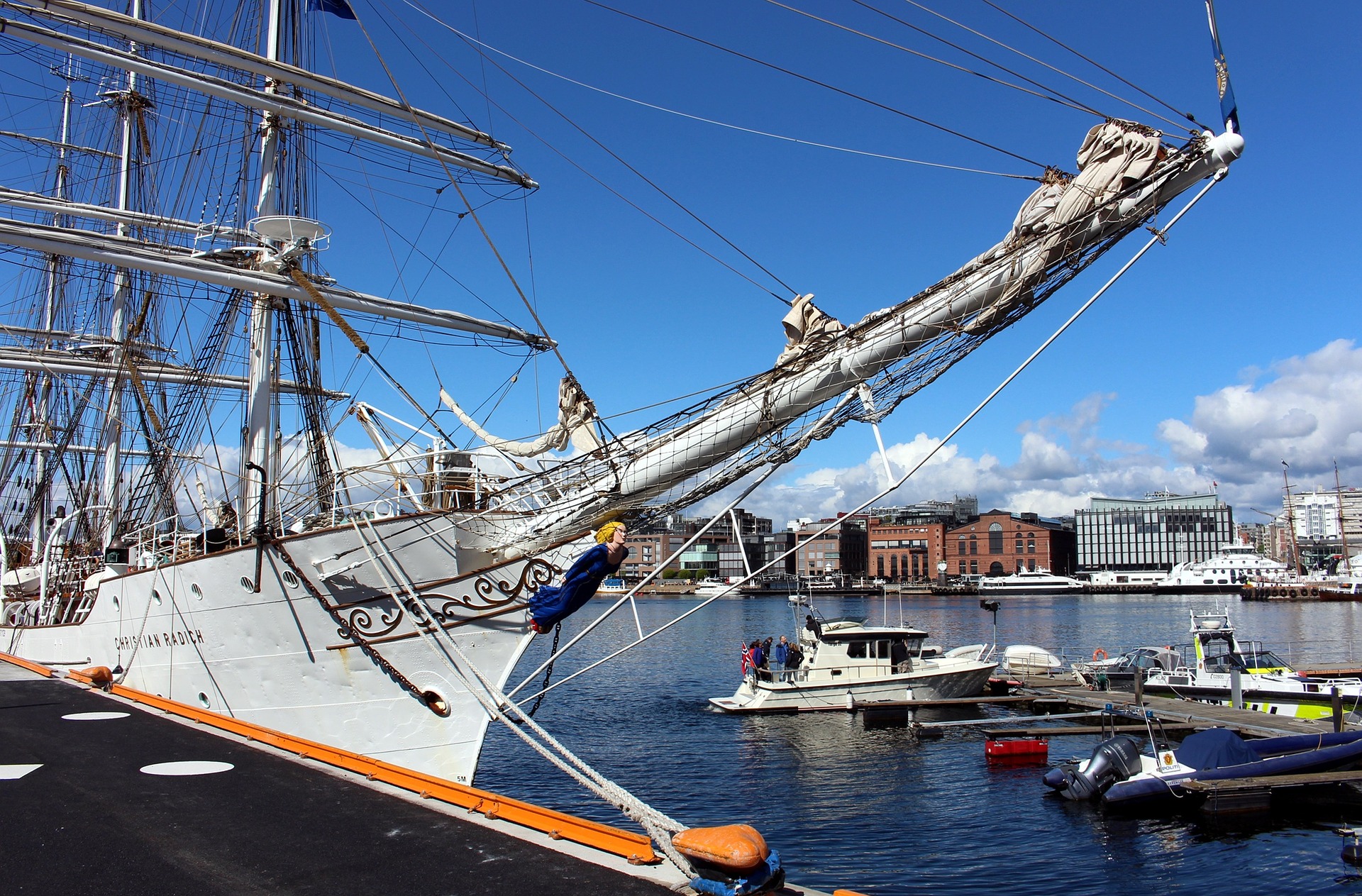
Oslo’s Fram and Maritime Museums
Oslo’s Bygdoy Island is a real gem in the city of Oslo. Sometimes referred to as the museum island it’s also the Summer farm of the Norwegian Royal family.
Two of the museums on the island are the Fram Museet and the Norge Maritime Museet. Both are right next to each other, and you can buy tickets for both, or they are free with the Oslo Pass.
Getting to the museums and Bygdoy can be half the adventure. Sure you could drive, but it is a lot easier to take Oslo’s public transit, which is included with the Oslo Pass. You can take the bus, or even better in the summer, there is a ferry that will shuttle you across the Oslo Fjord from the harbor area near the Oslo City Hall.
The Fram
The Fram is the polar exploration ship used by Roald Amundson in his quest to be one of the first people to the South Pole. (Spoiler, he got there first.). The museum also houses the Gjoa ship famous for its Northwest passage.
The outside of the Frammuseet looks like two giant a-frame houses. As you enter you realize why. The bow of the Fram greets you as you walk up to the ticket counter. It’s only after you pass the counter do you get a full view. The Fram sits intact on a lowered floor, the masts reaching toward the apex of the roof. It’s impressive, to say the least.
Surrounding the Fram on three levels are displays and objects from Fram’s polar voyages and the history of polar exploration.
But the best part is that you can go inside the ship. You can feel how small the inside space is, and short, so watch your head. You can stand on the deck and enjoy the amazing light and sound show that was installed a few years ago. That by itself is an amazing experience.
But there is a lot more to see. Take the tunnel on the lower level and it takes you over to the Gjoa building. There you can also get on board and inside the vessel that survived being trapped in the Northwest Passage for three years, frozen in the pack ice. For those three years, Amdunson and his tiny crew lived off the ice and spent time making scientific observations.
Both the Fram and the Gjoa are wonderful to experience. There is a lot of information to take in. If you want to take it in more chronological order, you might want to start on the Gjoa side first. Until we are all able to travel again, the Fram website has a very good virtual tour https://youriguide.com/embed/39_bygd_ynesveien_oslo_no_03_no?unbranded=1&bgcolor=FFFFFF
Norsk Maratint museet
After the Fram Museum, the Norway Maritime Museum is just a short walk next door. It is a lot bigger than the outside impression. From the front, it looks like an unassuming brick building. But it goes back and down toward the Oslo Fjord, with some great views from some decks and windows.
The collection has a wide range, something for a lot of people. There are areas of artworks and paintings about the sea, smaller fishing boats, an entire gallery full of figureheads from ships, and even a research library.
But some of the really fun stuff is more hands-on. The museum walks you through the history of sailing and seafaring in Norway. So there are a lot of displays of old tools and clothing. But then the more hands-on displays start once you get to the modern science of seafaring. That’s when you start to realize just how much science goes into us, the food we eat, and the things we use, moving across the oceans.
The maritime museum is worth the time, If you have a thing for seafaring and history, you will not be disappointed. Plus there are a lot of hands-on displays, so if you have kids or are a kid at heart, it’s a fun place to visit.